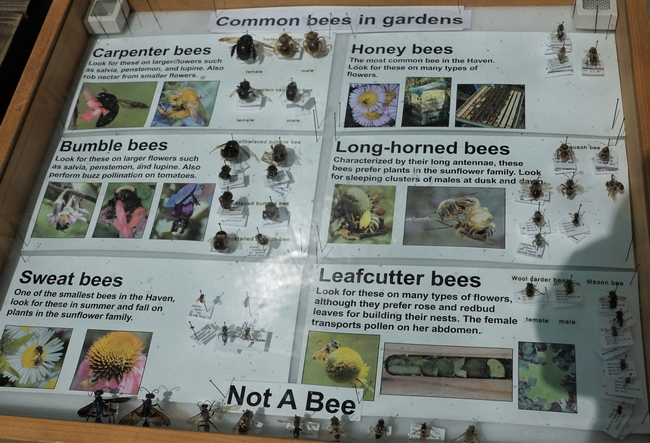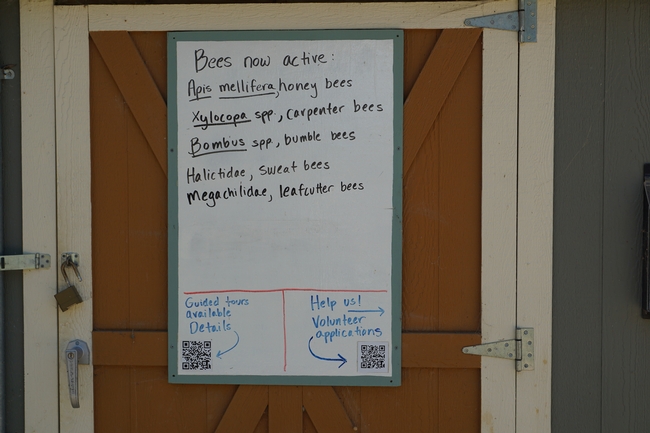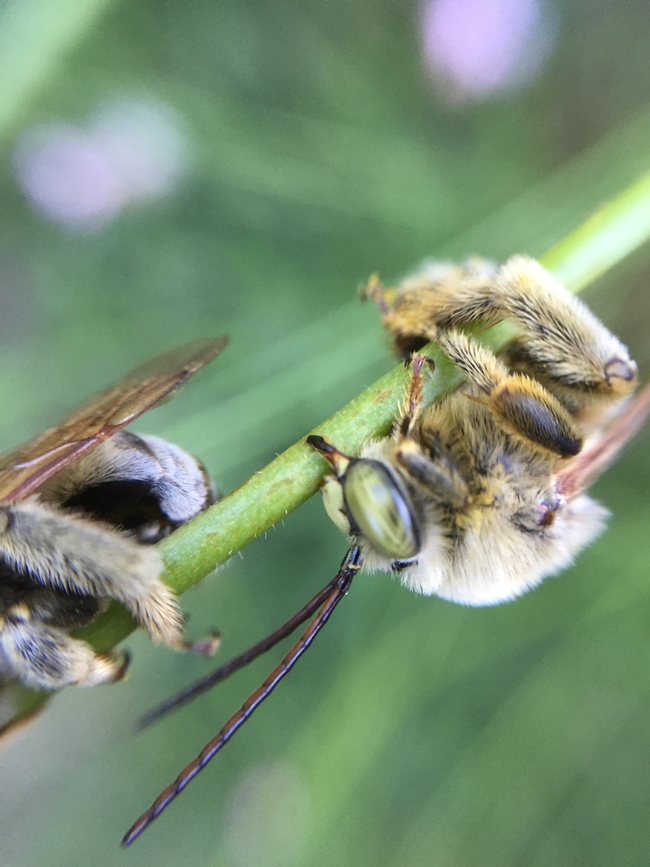Bees Commonly Found in Our Gardens-Solano and Surrounding Counties
Recently my husband brought home a “bee barn” to aid in our quest for attracting pollinators to our garden. We are hoping that some bees will take up residency in this barn, but I am not sure what to expect. So, I started to do some research that brought me to a more wide-ranging question; what types of bees am I really going to see in my garden in Solano County and what are their needs to become established?
In my hunt for new bee-related information, I took a very informative and enjoyable class at the Häagen-Dazs Bee Haven in Davis, taught by Christine Casey, Ph.D., Academic Program Management Office, Häagen-Dazs Honey Bee Haven, Department of Entomology and Nematology, UC Davis. The Häagen-Dazs Honey Bee Haven is an outdoor museum on the UC Davis campus where visitors can observe and learn about bees, and the plants in their habitat. Visit their website for information about their museum at https://beegarden.ucdavis.edu/.
To my delight, the class not only answered my question on what types of bees I will probably see in my garden, but also provided some really useful tips on how to identify the different bees, their nesting behavior, and some fascinating facts unique to each species.
Honey bees
o 1/2 to 1/3”
o Black stripes alternating with bands of amber to brown
o Nest in large colonies in above ground hives
o To keep the hive cool, some of the bees will fan the nest, some will leave the nest to increase airflow, and then there are the “water collector” bees, who find water, drink the water, and then return to the hive and regurgitate the liquid for hive regulation.
Bumblebees
o 3/4 – 1 ½ ”
o Black and yellow with a fuzzy abdomen
o Nest above ground and underground (could use bee box/barn)
o Many bees, especially bumblebees use “scent marking” to be able to detect and avoid flowers already visited.
o Queen lives through winter so important to have early bloomers – continuous overlapping bloom
Carpenter bees
o 1/2 – 1”
o Resemble bumble bees but the abdomen is shiny, not fuzzy
o Drills nest into softwood (doesn't use “predrilled” nest)
o Occasionally referred to as “robber” bees. When nectar is hard to reach, they bite a hole at the base of the flower in order to get to the nectar. Because the anthers are bypassed and the flower is not ‘rewarded' by being pollinated, this is referred to as nectar robbing.
Long-horned bees
o 0.3 – 0.7”
o Vary in the color of their wings, hair, eyes, legs, and antennae
o They get their name from the males' unmistakable and unusually long antennae
o Females nest underground and males have to find a place outside the nests to sleep, sometimes forming “male sleeping aggregations” on plants.
Sweat bees
o Very small –0.12 to 0.40”
o Usually black or metallic
o Primarily nest underground in the soil - be careful to leave some bare ground/space – mulch will prevent them from nesting.
o Can be attracted to salts in human perspiration.
Leafcutter bees
o Resemble honey bees but usually darker in color
o Nest above ground in “premade” holes – could use bee barn!
o If you see half-moon shaped holes in leaves – a leafcutter bee has been gathering leaf tissue to take back to form nest cells. This will only be located around the edges of the leaf and will be smooth, not jagged.

Picture of Bee Display at Haagen-Dazs Bee Haven

Sign identifying active bees June 2019 Haagen-Dazs Bee Haven

Longhorn bee in Dixon. photo by Jennifer Baumbach


Posted by Kathy Klobas on July 20, 2019 at 11:17 AM